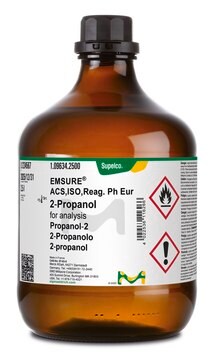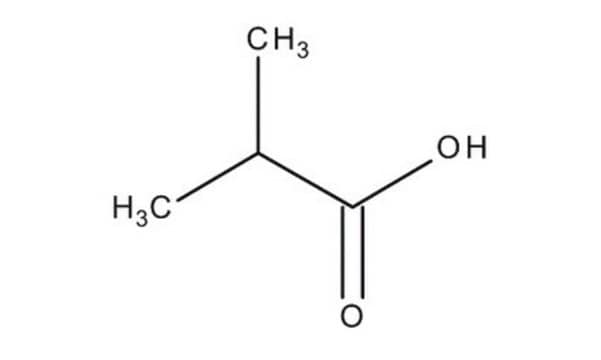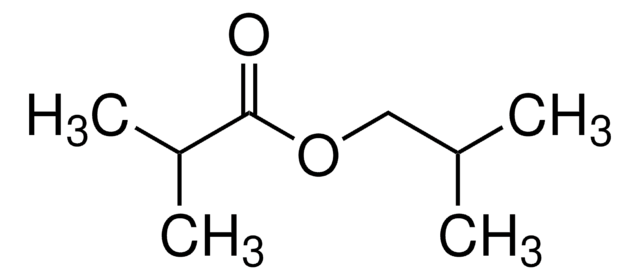W217905
Isobutyl alcohol
≥99%, FCC, FG
Synonym(s):
2-Methyl-1-propanol, Isobutanol, Isobutyl alcohol
About This Item
Fragrance grade
Halal
Kosher
meets purity specifications of JECFA
Recommended Products
biological source
synthetic
Quality Level
grade
FG
Fragrance grade
Halal
Kosher
agency
follows IFRA guidelines
meets purity specifications of JECFA
reg. compliance
EU Regulation 1223/2009
EU Regulation 1334/2008 & 178/2002
FCC
FDA 21 CFR 117
FDA 21 CFR 172.515
vapor density
2.55 (vs air)
vapor pressure
8 mmHg ( 20 °C)
8.8 mmHg ( 0 °C)
assay
≥99%
form
liquid
autoignition temp.
801 °F
Looking for similar products? Visit Product Comparison Guide
Related Categories
General description
Application
- Volatiles from nutritional fungal symbiont influence the attraction of Anisandrus maiche (Coleoptera: Curculionidae) to ethanol-baited traps.: This investigation revealed that volatiles emitted by fungal symbionts impact the attraction of Anisandrus maiche to ethanol-baited traps. The study suggests potential applications in pest management strategies by utilizing isobutanol and other volatiles (Tobin et al., 2024).
signalword
Danger
hcodes
Hazard Classifications
Eye Dam. 1 - Flam. Liq. 3 - Skin Irrit. 2 - STOT SE 3
target_organs
Central nervous system, Respiratory system
Storage Class
3 - Flammable liquids
wgk_germany
WGK 1
flash_point_f
82.4 °F - closed cup
flash_point_c
28 °C - closed cup
ppe
Eyeshields, Faceshields, Gloves, type ABEK (EN14387) respirator filter
Choose from one of the most recent versions:
Already Own This Product?
Find documentation for the products that you have recently purchased in the Document Library.
Customers Also Viewed
Our team of scientists has experience in all areas of research including Life Science, Material Science, Chemical Synthesis, Chromatography, Analytical and many others.
Contact Technical Service











